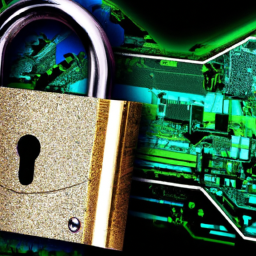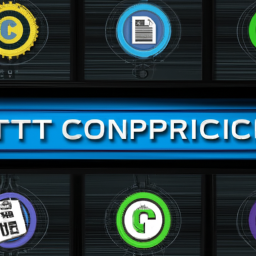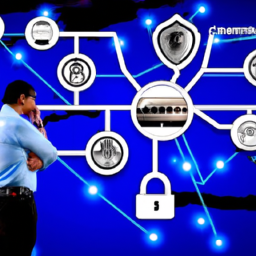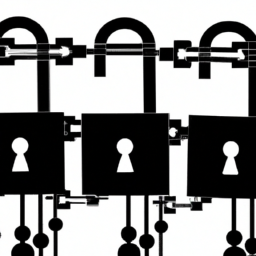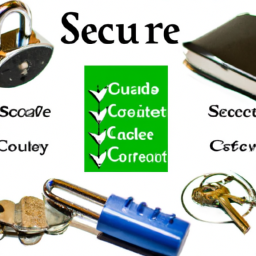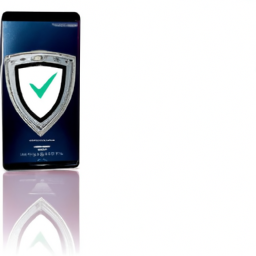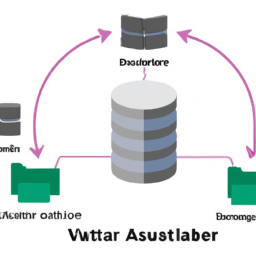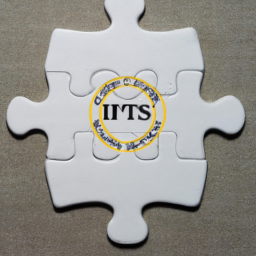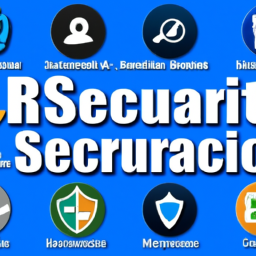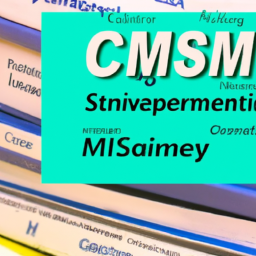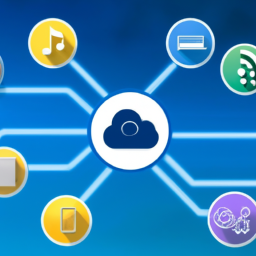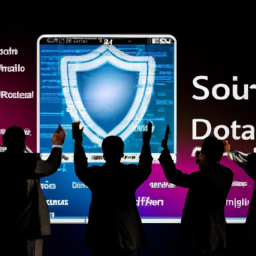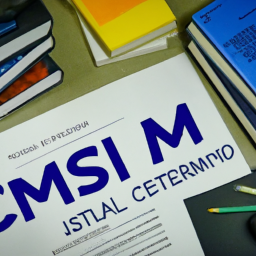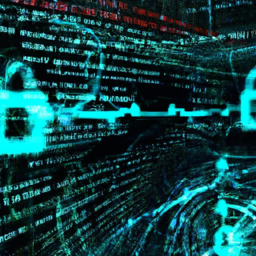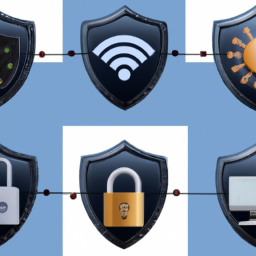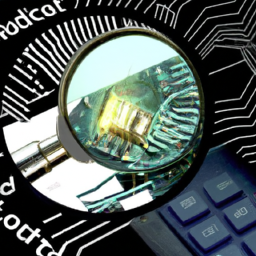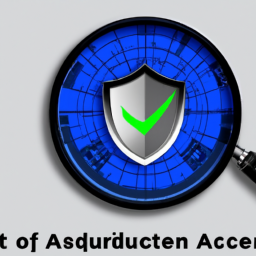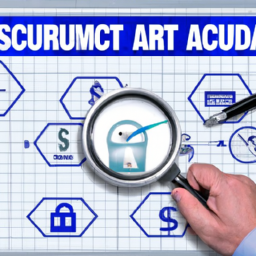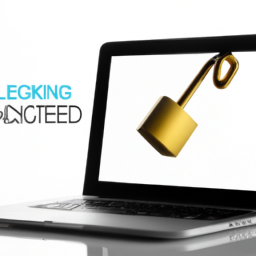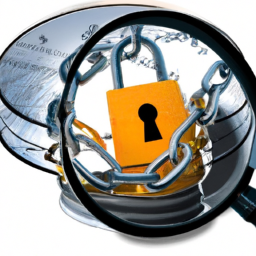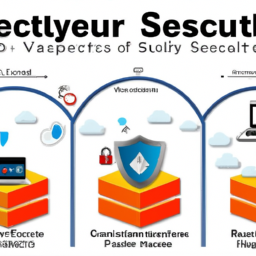In the ever-evolving landscape of cybersecurity, staying one step ahead of threats is paramount. As the digital realm expands, so do the risks, making it crucial to understand the emerging trends that shape the future of cybersecurity. Like a vigilant sentry guarding the gates, you must familiarize yourself with the insights and predictions that will fortify your defenses.
Prepare to embark on a journey through the intricate world of emerging cybersecurity trends, where artificial intelligence and machine learning wield their analytical prowess to detect and thwart cyber threats.
Cloud security and data protection act as impenetrable shields, safeguarding your invaluable information from malicious intent.
The Internet of Things (IoT) opens up a Pandora’s box of vulnerabilities, demanding meticulous attention to its security.
Mobile devices, with their ever-increasing presence, bring both convenience and risk, necessitating robust mobile security practices.
Beware the stealthy tricks of social engineering and phishing attacks, which exploit human vulnerabilities.
Finally, navigating the labyrinth of cybersecurity regulations and compliance is essential to ensure your organization’s resilience in the face of potential breaches.
Brace yourself for the enlightening journey ahead, as we unravel the intricate strands of emerging cybersecurity trends.
Key Takeaways
- Artificial intelligence and machine learning are transforming cybersecurity by detecting and responding to threats in real-time and identifying patterns in network traffic.
- Cloud security and data protection are essential for safeguarding information, with encryption ensuring data privacy in the cloud and multi-factor authentication adding an extra layer of security.
- IoT devices pose vulnerabilities and risks, but updating firmware, using strong passwords, and segmenting IoT networks can help mitigate these risks.
- Mobile device management (MDM) solutions can enforce security policies, enable remote management and security of mobile devices, and mitigate risks to data security posed by BYOD policies.
Artificial Intelligence and Machine Learning in Cybersecurity
Get ready, because AI and machine learning are revolutionizing the world of cybersecurity! These cutting-edge technologies are transforming the way we approach data breach prevention and network anomaly detection.
With AI algorithms constantly analyzing vast amounts of data, cybersecurity professionals can now detect and respond to threats in real-time, preventing potential breaches before they occur.
Machine learning models can identify patterns and anomalies within network traffic, enabling the identification of suspicious activities that may indicate an ongoing attack.
By continuously learning from new data and adapting their algorithms, AI systems can improve their accuracy and effectiveness over time.
As we delve deeper into the realm of AI and machine learning in cybersecurity, we’ll explore how these technologies are also reshaping cloud security and data protection.
Cloud Security and Data Protection
Securing your cloud infrastructure is of utmost importance to protect your sensitive data from unauthorized access and potential breaches. Encryption plays a vital role in ensuring data privacy in the cloud, as it transforms your data into an unreadable format that can only be deciphered with the correct decryption key.
By implementing robust encryption measures and adhering to stringent data protection protocols, you can safeguard your valuable information and mitigate the risks associated with cloud computing.
Importance of securing cloud infrastructure
Ensure your cloud infrastructure is properly protected to safeguard your valuable data and avoid devastating security breaches. Securing cloud infrastructure poses compliance challenges, as organizations must adhere to strict regulations to protect sensitive information. However, emerging technologies in cloud security provide innovative solutions to address these challenges.
Consider the following key points:
-
Implementing multi-factor authentication: This adds an extra layer of security by requiring users to provide multiple forms of verification, such as a password and a unique code sent to their mobile device.
-
Conducting regular vulnerability assessments: By identifying and addressing vulnerabilities in your cloud infrastructure, you can proactively prevent potential security breaches.
-
Utilizing encryption techniques: Encrypting data at rest and in transit ensures that even if unauthorized access occurs, the data remains unreadable and unusable.
Securing your cloud infrastructure is crucial for protecting your data. As we transition to discussing encryption and data privacy in the cloud, it’s important to understand the significance of these measures in ensuring a robust security framework.
Encryption and data privacy in the cloud
Maximize the security of your cloud infrastructure by implementing robust encryption and ensuring data privacy, creating a virtual fortress for your valuable information. Encryption techniques play a crucial role in safeguarding data in the cloud, preventing unauthorized access and protecting against potential breaches. By encrypting data, you render it unreadable to anyone without the decryption key, making it virtually impossible for cybercriminals to exploit your information. Additionally, encryption ensures data privacy by ensuring that only authorized individuals can access sensitive data. However, it is important to stay informed about emerging encryption methods and stay updated with the latest best practices to stay ahead of cyber threats. Implementing strong encryption protocols and regularly auditing your cloud infrastructure will help mitigate the risks of a cloud data breach. Transitioning into the next section, let’s now delve into the critical aspect of internet of things (IoT) security.
Internet of Things (IoT) Security
When it comes to the Internet of Things (IoT), there are vulnerabilities and risks associated with the use of these devices. It is important to be aware of these potential weaknesses in order to ensure the security of your IoT network.
Best practices for securing IoT networks include regularly updating firmware, using strong and unique passwords, and implementing network segmentation to limit the impact of a potential breach.
Stay vigilant and proactive in your approach to IoT security to mitigate any potential risks.
Vulnerabilities and risks associated with IoT devices
Imagine a world where your everyday devices – from your smart thermostat to your fitness tracker – are all vulnerable to cyber attacks, putting your personal information and even your safety at risk. Device vulnerabilities are a major concern in the realm of IoT. Here are four key risks associated with IoT devices:
-
Weak authentication: Many IoT devices lack proper authentication mechanisms, making it easier for attackers to gain unauthorized access and control over them.
-
Inadequate encryption: Insufficient encryption protocols leave IoT devices susceptible to data breaches, allowing attackers to intercept and manipulate sensitive information.
-
Firmware vulnerabilities: IoT devices often run on outdated firmware that hasn’t been patched for security flaws, making them attractive targets for hackers.
-
Lack of security updates: Manufacturers frequently neglect to release timely security updates for their IoT devices, leaving them exposed to emerging threats.
Securing IoT networks is crucial to mitigate these risks. Transitioning into the next section, let’s explore the best practices for safeguarding your IoT ecosystem.
Best practices for securing IoT networks
Securing IoT networks is crucial, and one interesting statistic shows that by 2025, it’s estimated that there will be over 41 billion connected IoT devices worldwide, highlighting the urgent need for effective security practices.
To secure IoT devices, it’s essential to implement robust security measures at every level, starting with the network itself. IoT network segmentation is a best practice that involves dividing the network into smaller, isolated segments to limit the potential impact of a security breach.
By separating devices into different segments based on their functionality or level of sensitivity, organizations can minimize the lateral movement of threats and contain any potential damage. This approach enhances visibility and control over the IoT network, allowing for more effective monitoring and response to security incidents.
Moving forward, securing IoT networks through segmentation will be crucial in mitigating the risks associated with the increasing number of connected devices.
Transitioning into the subsequent section about mobile security and BYOD, it’s important to address the vulnerabilities and challenges that arise from the use of personal devices in corporate environments.
Mobile Security and BYOD (Bring Your Own Device)
Protect your personal information and sensitive data on your mobile devices with the increasing prevalence of Bring Your Own Device (BYOD) policies in the workplace. However, the implementation of BYOD policies poses numerous challenges when it comes to ensuring mobile security.
One of the main challenges is the lack of control over employee-owned devices, which makes it difficult to enforce security measures and policies uniformly. To address this issue, organizations are adopting mobile device management (MDM) solutions. These solutions enable IT administrators to manage and secure mobile devices remotely by enforcing security policies, monitoring device usage, and even remotely wiping data if a device is lost or stolen.
MDM solutions also provide features like application whitelisting and blacklisting, which help prevent unauthorized access to sensitive data. By implementing MDM solutions, organizations can mitigate the risks associated with BYOD and protect their data from potential breaches.
Moving forward, it’s crucial to stay vigilant against emerging threats, such as social engineering and phishing attacks, as cybercriminals continue to exploit vulnerabilities in mobile devices.
Social Engineering and Phishing Attacks
Beware, for in the treacherous waters of the digital realm, cyber criminals lurk, ready to deceive and manipulate you through social engineering and phishing attacks.
These cyber adversaries employ various social engineering techniques to exploit human psychology and gain unauthorized access to sensitive information. From impersonating trusted individuals to creating fake websites, they use advanced phishing methods to trick unsuspecting victims into divulging personal data or clicking on malicious links. Their tactics are becoming increasingly sophisticated, making it crucial for individuals and organizations to stay vigilant.
To protect yourself from falling victim to social engineering and phishing attacks, remember these key points:
-
Be cautious of unsolicited emails or messages requesting personal information.
-
Verify the authenticity of websites before entering sensitive data.
-
Regularly update and strengthen your passwords to minimize the risk of unauthorized access.
As we delve into the next section on cybersecurity regulations and compliance, it is essential to understand the ever-evolving threat landscape and take proactive measures to mitigate risks.
Cybersecurity Regulations and Compliance
To ensure the utmost security and adherence to industry standards, you must actively comply with cybersecurity regulations to safeguard sensitive data and mitigate potential risks.
Cybersecurity regulations act as a framework that organizations must follow to protect their digital assets from threats and vulnerabilities. These regulations encompass various aspects such as data privacy, information security, and incident response.
Compliance involves conducting regular cybersecurity audits to evaluate and improve the effectiveness of your security measures. These audits assess your organization’s adherence to the established regulations, identify any gaps or weaknesses, and provide recommendations for remediation.
Additionally, compliance also entails having a robust data breach response plan in place to effectively handle and mitigate the impact of any potential breaches.
By adhering to cybersecurity regulations and maintaining compliance, you can ensure the confidentiality, integrity, and availability of your sensitive data.
Frequently Asked Questions
How can artificial intelligence and machine learning be used to detect and prevent cyber threats?
To detect and prevent cyber threats, artificial intelligence (AI) and machine learning (ML) play a crucial role. AI algorithms can analyze vast amounts of data and identify patterns that indicate potential threats. ML enables systems to continuously learn and adapt to new threats. By utilizing AI and ML techniques, organizations can enhance their cybersecurity defenses. They can proactively detect and respond to cyber threats and ultimately safeguard their valuable data and systems.
What are the key challenges and considerations in ensuring cloud security and data protection?
Cloud security challenges and data protection considerations are critical factors in ensuring the safeguarding of sensitive information.
When it comes to cloud security, organizations must address issues such as identity and access management, data encryption, and vulnerability management.
Additionally, data protection requires careful consideration of data classification, backup and recovery strategies, and compliance with regulatory requirements.
By proactively addressing these challenges and considerations, organizations can minimize the risk of data breaches and ensure the integrity and confidentiality of their data in the cloud.
How can IoT devices be secured to minimize the risk of cyber attacks?
To secure smart homes and minimize the risk of cyber attacks on IoT devices, it’s crucial to focus on two key areas: securing the devices themselves and ensuring supply chain security.
Implementing strong authentication protocols, regular software updates, and robust encryption techniques can enhance the security of IoT devices.
Additionally, conducting thorough vetting and monitoring of suppliers and manufacturers can help mitigate potential vulnerabilities introduced through the supply chain.
By addressing these areas, you can better protect your IoT devices and minimize the risk of cyber attacks.
What are the best practices for maintaining mobile security in a BYOD environment?
To maintain mobile security in a BYOD environment, you must follow best practices and implement effective risk mitigation strategies.
Start by enforcing strong password policies and enabling multi-factor authentication.
Regularly update mobile devices with the latest security patches and firmware updates.
Implement mobile device management (MDM) solutions to enforce security policies and remotely wipe data if necessary.
Encrypt sensitive data both at rest and in transit.
Conduct regular security awareness training to educate users about potential risks and best practices for mobile security.
What are the most common social engineering tactics used in phishing attacks, and how can individuals protect themselves against them?
To protect yourself against common social engineering tactics used in phishing attacks, it’s crucial to enhance your cybersecurity awareness. Be cautious of suspicious emails that ask for personal information or urge immediate action. Look out for red flags such as misspellings, generic greetings, or unfamiliar senders. Avoid clicking on links or downloading attachments from untrusted sources. Implement effective phishing prevention techniques like multi-factor authentication and email filtering. Stay vigilant and report any phishing email examples to your organization’s IT department.
Conclusion
In conclusion, the emerging cybersecurity trends discussed in this article provide valuable insights and predictions for the future. With the integration of Artificial Intelligence and Machine Learning, organizations can enhance their cybersecurity efforts by detecting and mitigating threats more efficiently.
Cloud security and data protection are crucial in safeguarding sensitive information, while IoT security ensures the protection of interconnected devices. Mobile security and BYOD policies address the risks associated with personal devices in the workplace.
Additionally, cybersecurity regulations and compliance measures help to establish a standardized framework for organizations. While some may argue that these trends are expensive to implement, the potential consequences of a cyber attack far outweigh the initial investment.
Therefore, it’s imperative for organizations to stay ahead of these trends to ensure their digital assets remain secure.




